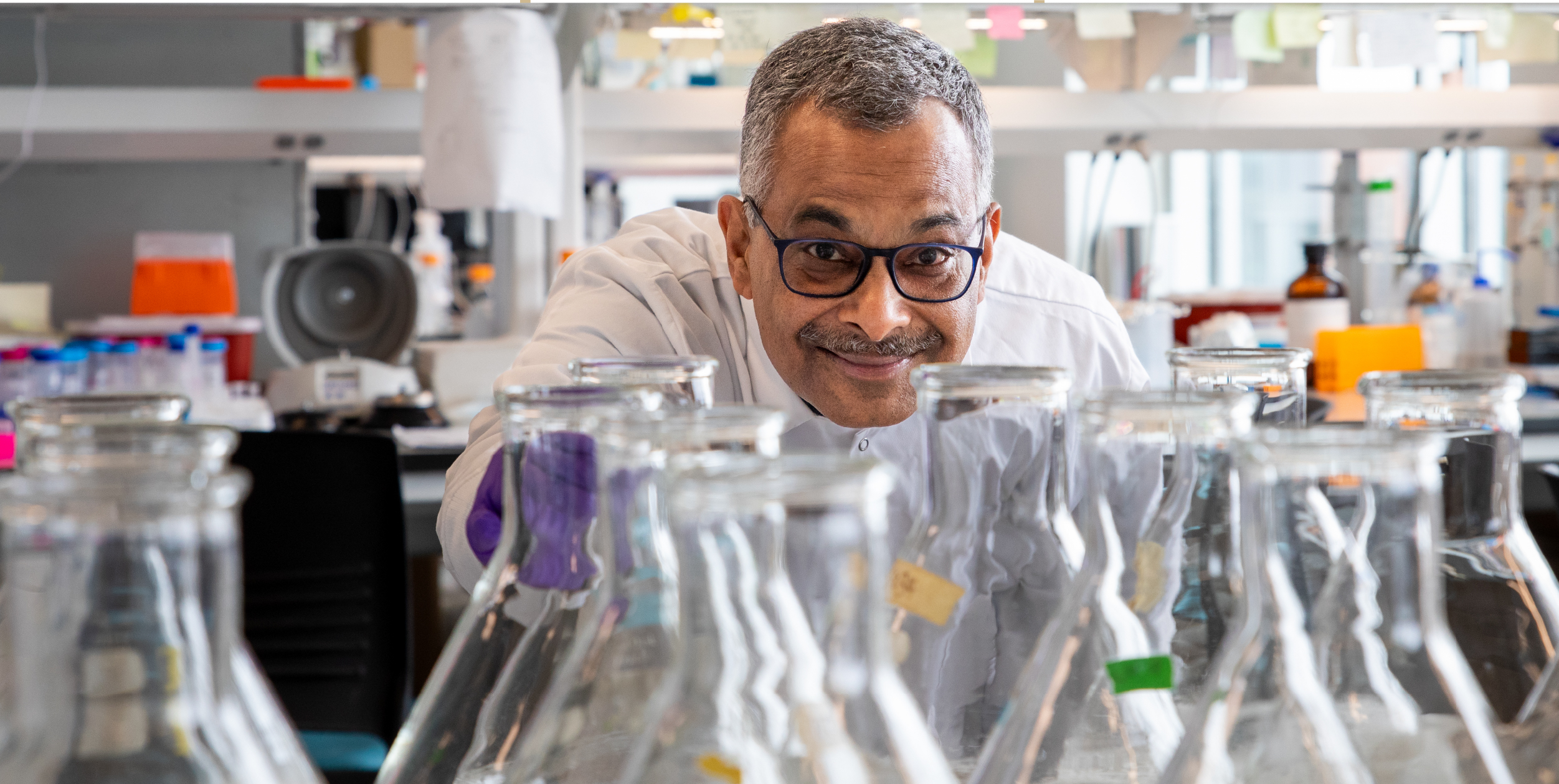A Vision for Science Without Borders: Subramanian Awarded EMSI’s Highest Distinction
07-22-2025

Professor N. N. Dasgupta Memorial Lecture Award
Ramaswamy Subramanian, professor of biological sciences and biomedical engineering at Purdue University, has been awarded the 2025 Professor N. N. Dasgupta Memorial Lecture Award by the Electron Microscope Society of India (EMSI)—the organization’s highest honor. The award recognizes Subramanian’s far-reaching contributions to electron microscopy and his leadership in advancing global access to cutting-edge scientific tools.
Subramanian delivered the prestigious keynote lecture on July 12 at the International Conference on Electron Microscopy in Bangalore, India. The honor is named for Professor N. N. Dasgupta, a pioneering Indian biophysicist who helped construct Asia’s first electron microscope and played a key role in founding EMSI.
“This award means a lot because it’s not just about research accomplishments,” Subramanian said. “It also acknowledges the work of building institutions and creating opportunities for others. That global impact is deeply meaningful to me.”
Subramanian has been a driving force in bringing cryogenic electron microscopy (cryo-EM) to the forefront of global science. His vision and advocacy helped position India as an early leader in the field, establishing one of the country’s first cryo-EM centers and laying the groundwork for a nationwide network of advanced imaging facilities.
While India has a long tradition in structural biology, the country had fallen behind in the early 2000s due to a lack of investment in synchrotron technology. Subramanian saw cryo-EM as a chance to reverse that trend. Inspired by conversations with Nobel laureate Venki Ramakrishnan—who described how cryo-EM could rapidly resolve structures that once took decades—Subramanian worked to ensure India didn’t miss this new technological wave.
He wrote the funding proposal, trained abroad, and led the development of India’s first cryo-EM structure. Today, thanks in part to his leadership, India boasts more than eight cryo-EM centers. The result has been a sharp rise in scientific output, increased global collaboration, and growing use of the technology by Indian pharmaceutical companies.
His international efforts are now opening doors back at Purdue. For example, Purdue biology faculty member Brian Metzger is collaborating with a researcher at IIT Kanpur through the Human Frontier Science Program—a project made possible by India’s growing cryo-EM infrastructure. “It’s very rewarding to see something I started having ripple effects across borders,” Subramanian said.
At Purdue, Subramanian continues to push the boundaries of what cryo-EM can do. His current focus is on imaging proteins within intact cells—advancing from purified molecules to more realistic biological contexts. To support this next frontier, he helped secure funding for a focused ion beam scanning electron microscope that will allow Purdue researchers to explore proteins in their native environments.
“In six months to a year, we expect to start producing cellular-level structures,” he said. “And Purdue will be one of just a few institutions worldwide with that capability.”
Subramanian’s lab is known for balancing curiosity-driven research with real-world application. One recent study investigates how certain bacteria evade the immune system by stealing and displaying sugar molecules that mimic human cells. Another industry collaboration aims to understand the molecular basis of promising drug candidates already in clinical trials.
“I believe science thrives in a cycle,” Subramanian said. “Big questions drive new technologies, and those tools help us ask even better questions. I enjoy staying on the leading edge of that cycle.”
The EMSI award celebrates not only Subramanian’s scientific accomplishments but also his ability to connect people, institutions, and ideas across continents. His career is a testament to how one person’s vision—rooted in both curiosity and community—can reshape global science.
“Technology shapes what questions we’re able to ask in science,” he said. “That’s why it’s so important to keep pushing forward—not just for ourselves, but for the entire scientific community.”
About the Department of Biological Sciences at Purdue University
The Department of Biological Sciences is the largest life sciences department at Purdue University. As part of Purdue One Health, we are dedicated to pioneering scientific discoveries and transformative education at the cutting edge of innovation. From molecules to cells, from tissues to organisms, from populations to ecosystems - we bring together multiple perspectives, integrating across biological scales to advance our understanding of life and tackle the world’s most pressing challenges. Learn more at bio.purdue.edu/.
Writer: Alisha Willett, amwillet@purdue.edu
Source: Ramaswamy Subramanian, subram68@purdue.edu